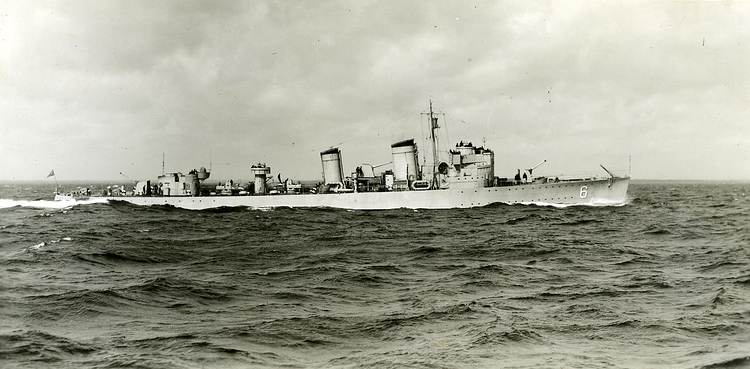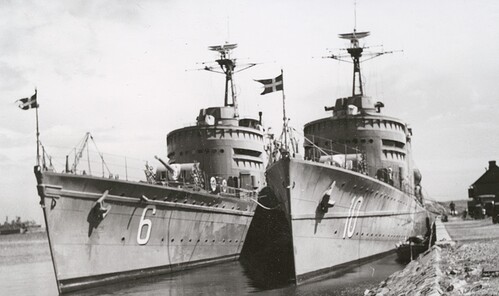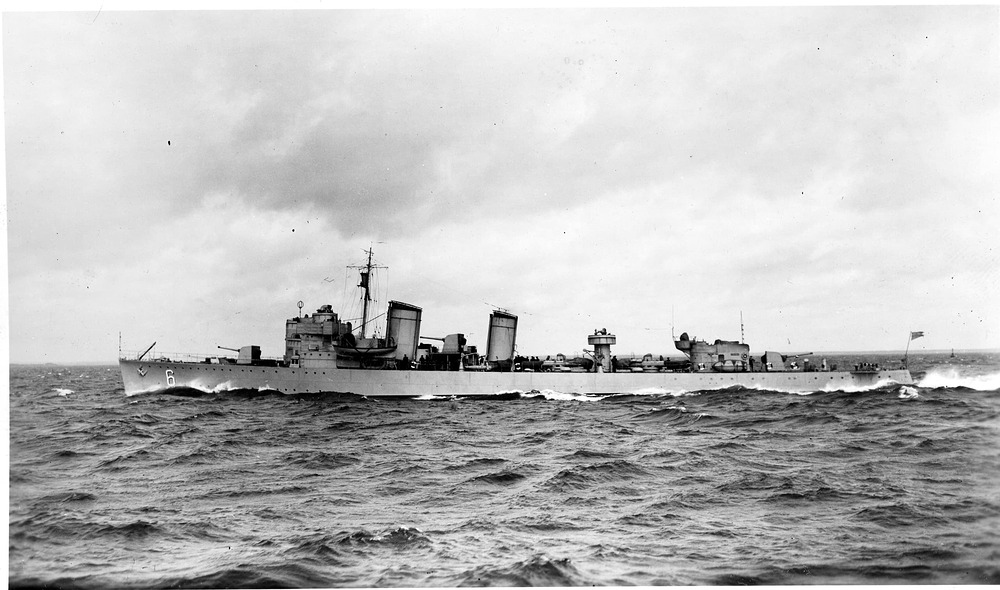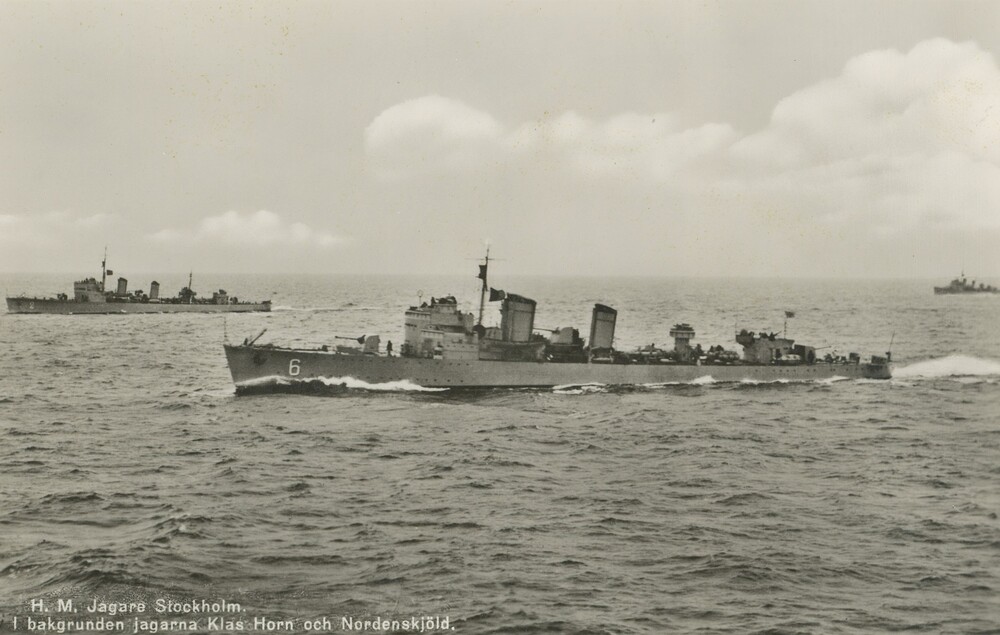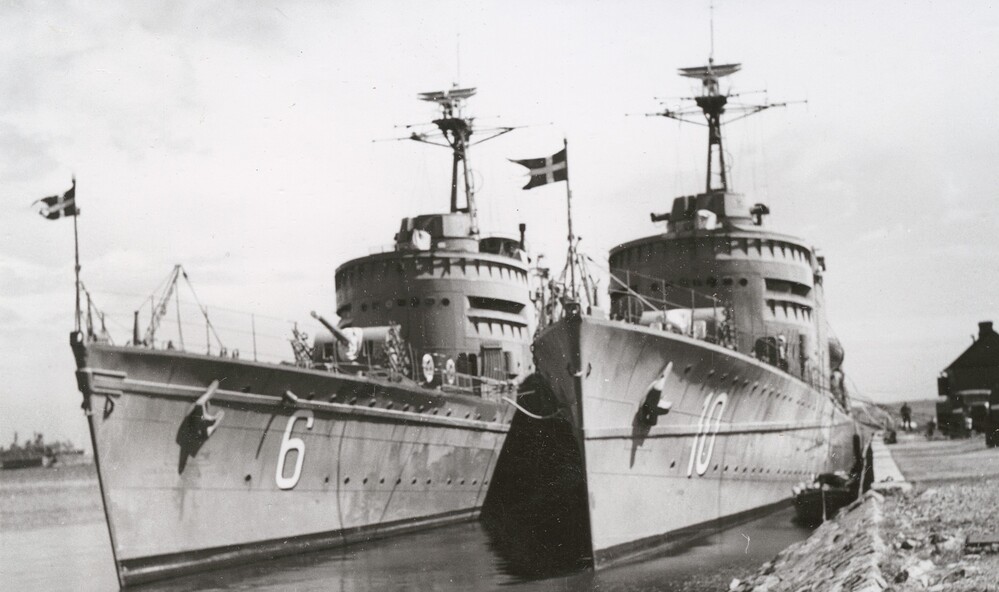H.M Jagare Stockholm (1937)
- Yes
- No
H.M Jagare Stockholm (6) was the second out of the six Göteborg class destroyers belonging to the Swedish navy. Launched in 1936 at the Karlskrona shipyard, she was delivered to the navy in 1937 and saw brief peace before the start of WW2. During the war she spent her days patrolling the Swedish coast and escorting cargo ships with her sisters. Post war she continued her service in the navy and received some modernizing refits but was ultimately put out of service in 1964 and scrapped in Ystad in 1965.
History
In the 1930’s the Swedish navy desired an expansion of its destroyer fleet, the two newly ordered Klas class destroyers weren’t enough and as such they requested funding from the government to procure additional ships. The government in turn gave the go ahead, allocating funds for the construction of two new destroyers of the preexisting Ehrenskjöld class in 1933. The two destroyers would end up getting redesigned and upgraded from the Ehrenskjöld class during their time on the drawing board as such were given their own classification, the design would end up being larger and more powerful than the Ehrenskjöld class they were based on, though they were still visually similar to some degree.
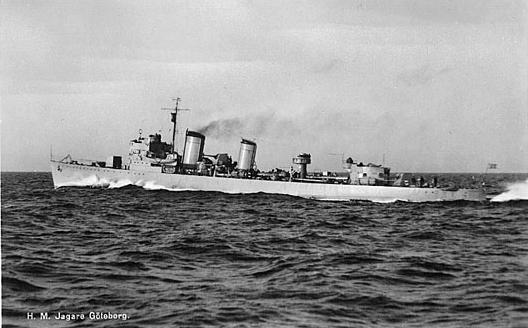
HM Jagare Göteborg, the first of her class.
The resulting Göteborg class (also known as the Stadsjagare class due to their names being based off Swedish coastal towns) would begin with two ships, HM Jagare Göteborg in 1936 and HM Jagare Stockholm in 1937. Four more ships would be ordered due to mix of positive impressions and the rising tensions in Europe, HM Jagare Malmö, Karlskrona, Gävle and Norrköping would be delivered between 1939 and 1941.
HM Jagare Stockholm as said was delivered in 1937, built by the Karlskrona dockyard in Karlskrona. She would see her time sailing in the Stockholm archipelago, serving with the 1st Destroyer division tasked with defending Swedish waters as well as escorting cargo ships transporting items such as iron ore to Germany. The crew of HM Stockholm saw much during the war, bearing witness to the Hårsfjärden disaster that claimed her sister HM Göteborg and for a short while towards the end of the war while stationed in Göteborg, she was apart of the force surveying the German submarine U-3503 who sailed to Sweden to scuttle their submarine and surrender as part of Operation Regenbogen, the crew of which were rescued by HM Norrköping.
HM Jagare Stockholm and her sister Norrköping anchored in Karlskrona.
Post war she continued on in her role as a destroyer, briefly joining her sister ship HM Norrköping as well as the armored cruiser HM Fylgia on a trip around Europe in 1948, visiting places like Scotland, The Netherlands, England and more. By the time 1949 rolled around she was sent in for modernization, replacing and upgrading her AA guns with 40mm Bofors as well as giving her a radar, widening her hull, giving her hydrophone equipment and moving the middle 12cm cannon back towards the stern, mimicking the gun placement on the Visby class destroyers. Unlike most of her sister ships, HM Stockholm did not get rebuilt into a frigate in her later years but was reclassified as one until she was put out of service in 1964 and sold for scrapping in Ystad the following year.
Armament and Stats
Deplacement: 1,240 tons full loaded
Length: 94,6 meters
Beam: 9 meters
Draught: 3,2 meters
Speed: Thanks to the 3 oil fired Penhoët boilers powering the 2 De Laval steam turbines generating upwards of 32,000 HP she could go up to 39 knots, though during her trials she powered up all the way to 41 knots.
Crew: 130 Men.
Main armament: 3 x 12cm Bofors M/24C cannons, one forward, one midship between the funnels and one aft.
12cm shells:
A 22,5kg APHE shell, 775 m/s, 1,63kg filler.
A 21kg HE shell, 800 m/s, 2,77kg filler.
A 21kg SAP shell, 500 m/s, no filler.
Anti-Aircraft armament: 4 x 25mm lvakan M/32 autocannons, one twin and two singles as well as 2 x 8mm lvksp m/36.
Secondary armament: 6 x 533mm m/30 torpedo tubes with them being in two triple tube setups on the deck, 2 x sjbk M/33 depth charge throwers and 2 x sjbf M/24 depth charge droppers. She could also carry and drop up to 46 mines.
